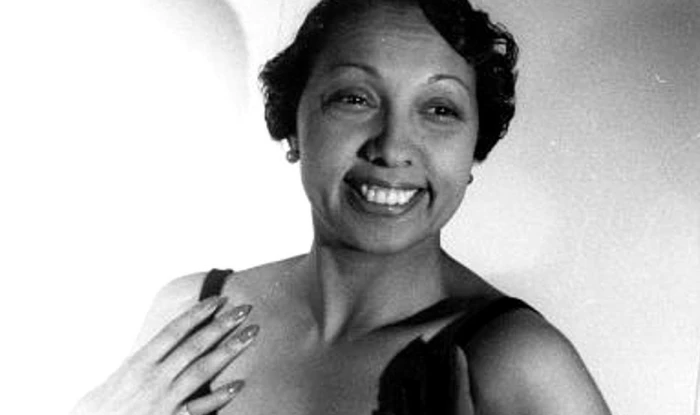The interwar years were marred with tension as more Black people came to Central Europe to live, study, and work. Josephine Baker, Louis Douglas, and the Chocolate Kiddies represented, for better and for worse, a new, glamorous, and titillating era of transatlanticism and “primitivist modernism.” But events such as the Black Horror on the Rhine campaign also point to the rise of a far-right nationalism and racism that wanted to expunge all Black elements from German and Austrian life. Into the mix we find Afro-Germans themselves, articulating in a 1919 petition their desires to be recognized above all as Germans. Nonetheless, as the Nazi party came to power, all Black people had to find new ways to manage their lives in light of extreme racism. Many fled, others hid, and some died in concentration camps. The lives of all were changed by the onset of Nazi rule and the growing numbers of German-born Blacks in particular faced the very real threat of sterilisation.
We are regularly developing new content. If you see an entry below without a link, that just means we working on the material, and we will make the page live when it is complete. If you would like information on these topics ahead of time, just email us and we’ll be happy to provide what we have ready.
The First World War and its aftermath
- German outrage at the use of colonial soldiers by the Entente powers (1914-1918)
 Two Harlem Hellfighters earn the Croix de Guerre (1918)
Two Harlem Hellfighters earn the Croix de Guerre (1918) The “Black Shame”: How long must this go on? (ca. 1920)
The “Black Shame”: How long must this go on? (ca. 1920) Degeneration (1920)
Degeneration (1920) Louis Brody on Black Germans and the “Black Shame” (1921)
Louis Brody on Black Germans and the “Black Shame” (1921) The Black Horror on the Rhine in caricatures (1920-1924)
The Black Horror on the Rhine in caricatures (1920-1924) Nazis connect Jonny spielt auf to the Black Shame (1928)
Nazis connect Jonny spielt auf to the Black Shame (1928)
Everyday life in Weimar Germany
Political activism and persecution
 Founding an African self-help association (1918)
Founding an African self-help association (1918) Petitions to German Authorities (1919)
Petitions to German Authorities (1919) The German section of the League for the Defense of the Negro Race (1929)
The German section of the League for the Defense of the Negro Race (1929) From Berlin to Chicago: Transnational Connections (1930)
From Berlin to Chicago: Transnational Connections (1930) The first international conference of negro workers in Hamburg (1930)
The first international conference of negro workers in Hamburg (1930) The Negro Worker comments on terror in Germany (1933)
The Negro Worker comments on terror in Germany (1933) Prisoners of War (1939-40)
Prisoners of War (1939-40) Heinrich Himmler’s ‘Order for Registration of all Negroes’ (1942)
Heinrich Himmler’s ‘Order for Registration of all Negroes’ (1942) Josef Nassy offers a view of internment camps (1942-45)
Josef Nassy offers a view of internment camps (1942-45)
Seeking inspiration in “Negro” culture
 Carl Einstein praises Negro sculpture (1915)
Carl Einstein praises Negro sculpture (1915) Hugo Ball exposes the myth of primitive authenticity (1916)
Hugo Ball exposes the myth of primitive authenticity (1916) Carl Einstein finds inspiration in African fairy tales (1917)
Carl Einstein finds inspiration in African fairy tales (1917) Ivan Goll celebrates the Negroes conquering Europe (1926) [English] [German]
Ivan Goll celebrates the Negroes conquering Europe (1926) [English] [German] Carl Einstein champions the “primitive” (1925)
Carl Einstein champions the “primitive” (1925) Sunrise in Morningland (1930)
Sunrise in Morningland (1930) Africans tell their own stories (1938)
Africans tell their own stories (1938)
Performance and propaganda
 Kafka imagines an ape who acts like a human (1917)
Kafka imagines an ape who acts like a human (1917) Responses to African-American concert singers (1924-1932)
Responses to African-American concert singers (1924-1932) The Bonambelas (ca. 1927)
The Bonambelas (ca. 1927) The German Africa Show (1934-1940)
The German Africa Show (1934-1940) Degenerate music (1938)
Degenerate music (1938) Using lynching in German propaganda (1938)
Using lynching in German propaganda (1938) Playing roles in Nazi films (1943)
Playing roles in Nazi films (1943) American cultural terrorism (1943)
American cultural terrorism (1943) African Americans and the degeneracy of swing (1943)
African Americans and the degeneracy of swing (1943) Black GIs in German home front propaganda (1943-1944)
Black GIs in German home front propaganda (1943-1944)
Everyday life in Nazi Germany
 Gustav Sabac el Cher: A Prussian Love Story (1868-1934)
Gustav Sabac el Cher: A Prussian Love Story (1868-1934) Kwassi Bruce to the Colonial Department of the Foreign Office (1934)
Kwassi Bruce to the Colonial Department of the Foreign Office (1934) Marie Nejar remembers her childhood in Nazi Germany (2015)
Marie Nejar remembers her childhood in Nazi Germany (2015)
African Americans and the struggle against racism
 Robert S. Abbott, “My Trip Abroad” (1929)
Robert S. Abbott, “My Trip Abroad” (1929) Percy Lavon Julian is happy and healthy in Viennese society (1929)
Percy Lavon Julian is happy and healthy in Viennese society (1929) Percy Lavon Julian’s doctoral success in Vienna (1930)
Percy Lavon Julian’s doctoral success in Vienna (1930) Walter White’s thoughts on participating in the 1936 Olympics (1935)
Walter White’s thoughts on participating in the 1936 Olympics (1935) African-American soldiers on the Omaha beachhead (1944)
African-American soldiers on the Omaha beachhead (1944) Asking Black GIs to surrender (1944)
Asking Black GIs to surrender (1944) An African American stands guard over German prisoners (1945)
An African American stands guard over German prisoners (1945)

I’m really glad that you like the site, and thanks for letting us know about the links. I don’t know why they wouldn’t work, but if you can give me an example I can try to figure it out.
LikeLike